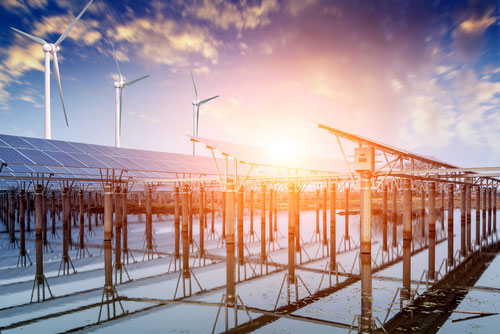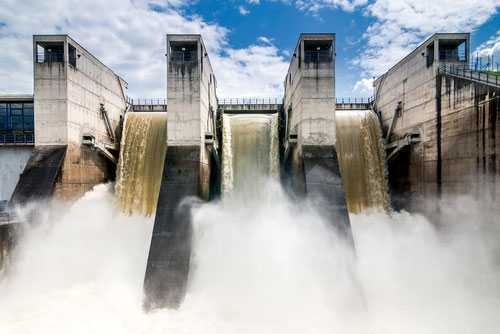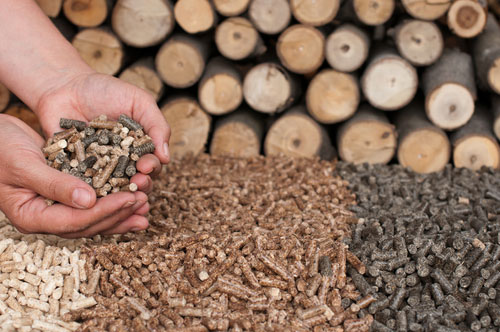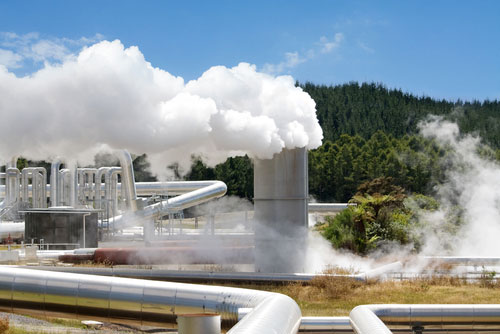
Hãy nhập câu hỏi của bạn vào đây, nếu là tài khoản VIP, bạn sẽ được ưu tiên trả lời.


1. 7 a.m and 6.30 p.m
2. Because public transport is cheap. Besides, travelling by public transport is a good way to reduce air pollution and the use of petrol, so it can help us protect the environment.

Renewable energies (or renewables) are ways to generate energy from (theoreally) unlimited natural resources. These resources are either available with no time limit or replenish more quickly than the rate at which they are consumed.
Renewable energies are generally spoken of as opposed to fossil fuel energies. The fossil fuels’ stocks are limited and non-renewable in the human timescale. The most known examples of these resources are coal, oil or natural gas. On the contrary, renewable energies are produced from renewable sources. Here, we’re talking about energy coming from solar rays, wind or water cycles – all theoreally unlimited on a human scale time.
Renewable energies are also often referred to as “green energies” or “clean energies”. Still, this doesn’t mean that these energies aren’t harmful to the environment and have zero impact. Nonetheless, they have a low environmental impact compared to fossil fuels. That’s why they’re increasingly becoming important elements in companies’ CSR strategies in terms of sustainable development.
There are several types of renewable energies that are produced by different sources such as the sun, wind or water. In fact, these renewables’ power consumption has been growing over the last year. They have provided 8% of the world’s electricity in 2017 and they now cover 1/3 of the power mix in Europe. At the same time, the energy grid gets 1/4 of the total energy in China and 1/6 in the United States, India, and Japan. Let’s learn more about them below.
- Related content:
- Is Solar Energy Really Green And Sustainable?
1 – Solar Energy

This type of renewable energy comes directly from the capture of solar radiation. Here, the solar radiation is absorbed by specific sensors and rebroadcasted following 2 possible operation modes:
- Capturing sun rays and directly converting them into energy through photovoltaic solar panels;
- Capturing, collecting and turning the sunlight into heat that warms up water or air.
Examples of Solar Energy in the World
It’s estimated that in 2017 1,6% of the worldwide generated energy came from solar sources. At the same time, solar power also contributed to 20% of the total energy growth in this same year. Some of the most known sources of solar energy are:
- The Kurnool Ultra Solar Park in India. It has a total generation capacity of 1000MW and over 4 million solar panels installed;
- The Longyangxia Solar Park in China that has a total capacity of 850MW and covers around 25sq km.
- The Kamuthi Solar Facility in India: it has a total capacity of 648MV and covers 10sq km.
Is Solar Energy Renewable or Nonrenewable?
Solar energy is inexhaustible in the sense that it will cease once the solar system’s star – the sun – dies. However, many people wonder if, from a perspective of human’s being able to capture and use solar energy in the long-term, whether solar energy is renewable or nonrenewable.
[Full answer available soon.]
2 – Windpower, a Renewable Energy
Wind power is another renewable energy. Here, the wind’s kine energy makes turbines spin and creates a mechanical movement. Afterward, a generator transforms this mechanical energy into electricity. There are several types of wind renewable energies: onshore wind turbines, off-shore wind turbines and even floating wind turbines. But the operating principles are basically the same for all these types of wind-generated energy.
Examples of Wind Power in the World
Wind power continues has also been growing, In fact, it provided 4.4% of global power generation in 2017. The highest installed wind capacity belongs to China (164GW). At the same time, in the EU, wind power provides 15% or more of the energy generated in several countries such as Germany, Portugal or Lithuania. Some of the most known sources of wind power energy are:
- The Gansu Wind Farm in China. It is still under construction and it will be able to produce 20,000MV of power by 2020;
- The onshore Muppandal Wind Farm in India with a capacity of 1,500MW and over 3000 turbines;
- The Alta Wind Energy Center in the U.S. with a total capacity of 1,548MW that’s expected to reach 3,000MW by 2040;
- The Walney Extension in the UK. It has a total capacity of 659MW and it’s the world’s largest offshore farm.
3 – Hydro-Electric Power

Hydro-electric power consists in the transformation of the kine energy of the water (from rivers, dams, marine currents or tides) into mechanical energy by turbines.
- Related content:
- Marine energies: what is it?
- 5 promising marine energy projects
- The tidal energy: an example of the tidal turbine DCNS
Examples of hydro-electric power in the world
- The Sihwa Lake Tidal Power Station in South Korea. This is the world’s biggest tidal power installation and it has a capacity of 254 MW;
- The Rance Tidal Power Station in Brittany, France, has a 240 MW capacity;
- The Three Gorges Dam in China is the world’s largest power station in terms of installed capacity (22,500 MW).
4- Biomass

Biomass is made up of organic materials from plants or animals that contain stored energy. The combustion of these natural materials produces renewable energy. Some examples of generating energy from biomass are:
- Directly burning solid biomass garbage or wood to produce heat;
- Converting biomass into biogases such as methane or CO2 due to the bacterial activity that happens in the absence of oxygen (as is the case in landfills);
- Using sugar or corn crops to create biofuels such as bioethanol or biodiesel and mixing them with fossil fuels afterward. As a matter of fact, the world’s biofuels production increased by 3.5% in 2017.
Related content:
- Palm oil has a huge environmental impact. What’s the impact of its use as a biofuel?
- What Is Biogas Energy Production?
Examples of Biomass Energy in the World
Some of the most known biomass power plants in the world are:
- The Iron Bridge power station in the UK, with a capacity of 740MW. It uses wood pellets as the main fuel;
- The Alholmenskaft power station in Finland. It has a 260MW energy generation capacity;
- The Polaniec power plant in Poland that uses mainly agricultural by-products and wood residues. It has a 205MW capacity.
5- Geothermal Power as a Renewable Energy

The Earth generates and stores geothermal energy. In other words, radioactive materials decaying inside the Earth are emitting energy. Electricity can be created using directly or indirectly this energy, depending on the technology implemented. There are 3 main ways to use geothermal energy:
- Generating electricity directly from the Earth’s heat;
- Producing heat directly from hot water boiling on the planet’s surface;
- Using pumps over the shallow ground to heat (and also to cool)

refer
Inventing a means of transport for my neighborhood is always on my mind. I have some ideas for the perfect vehicle which will be used widely by residents – a highspeed bicycle. It looks like a normal bike but it has wings. This bike can fly in the sky. There are some solar panels on it to catch the heat from the sun and generate power. Therefore, it will use solar energy to run. It reduces pollution and it’s fast, too. By this way, we can protect the environment and save energy for the future. I think it is a great invention

I think Space Train will be a mean of transport which will be suitable for my area. It will look like a normal train. It will run on solar energy so it won't cause pollution. It will also use wind power to move in bad weather. The space train will be used in the sky so it won't take up a lot of space on the ground. It will have SSS system to avoid crashing in the sky. It will be able to transport over 1000 people at the same time so many people can go to work on time and it won't make traffic jams. In conclusion, i think Space train will be comfortable for all ages to use. Thanks for listening

Put the sentences to make a logical dialogue
A. How can we do that, Dad?
B. Sure, Dad.
C. Anh we will use renewable energy sources like solar energy.
D. I will ride a bike to school tomorrow. What else, Dad?
E. We can travel by public transport or bicycles.
F. What are non-renewable sources of energy, Dad?
G. Is it a better source of energy?
H. Ph, so they will run out.
I. Yes, it is clean and plentiful
J. Yes. That's why we have to save the energy
L. Well, those sources of energy are limited and can't be replaced after use
M. You should turn off the TV or computer when you don't use them.
=> F -> L -> H -> J -> A -> M -> B -> E -> D -> C -> G -> I

Trains Discourager Transport Expensive Example Problem Citie Pollution ______________________________
Traffic congestion in many (1) ___cities_______ around the world is severe. One possible solution to this (2) ____problem______ is to impose heavy taxes on car drivers and use this money to make public transport better. One of the first benefits of such a measure is that the heavy taxes would (3) _____discourage_____ car owners from using their cars because it would become very (4) _____expensive_____ to drive. This would mean that they would begin to make use of public (5) ______transport____ instead, thus reducing traffic problems and (6) ____pollution______ as well. Another benefit would be that much more use would be made of public transport if it was improved. It is often the case that public transport in cities is very poor. For (7) _____example_____ , we often see old buses and (8) ____trains______ that people would rather not use. High taxes would generate enough money to make the necessary changes.
REFER
because you can enjoy a less stressful journey by letting someone else do the driving. you don't have to worry about finding a parking space. it reduces congestion in towns and cities. using public transport is cheaper than owning and operating a car.